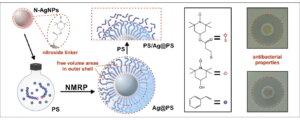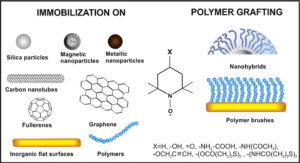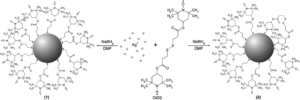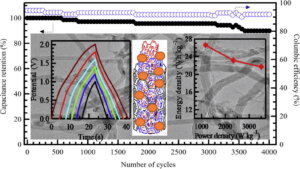Research highlight
Total citations: 900, H-index: 15, i10-index: 21
- The role of nanomaterials as effective adsorbents and their applications in wastewater treatment
H. Sadegh, G.A.M. Ali, V.K. Gupta, A.S.H. Makhlouf, R. Shahryari-ghoshekandi, M.N. Nadagouda, M. Sillanpää, E. Megiel, Journal of Nanostructure in Chemistry, 2017, 7, 1-14
(DOI: 10.1007/s40097-017-0219-4)
IF = 6.391, CITATION = +380
Abstract: Nanomaterials have been extensively studied for heavy metal ions and dye removals from wastewater. This article reviews the role of nanomaterials as effective adsorbents for wastewater purification. In recent years, numerous novel nanomaterial adsorbents have been developed for enhancing the efficiency and adsorption capacities of removing contaminants from wastewater. The innovation, forthcoming development, and challenges of cost-effective and environmentally acceptable nanomaterials for water purification are discussed and reviewed in this article. This review concludes that nanomaterials have many unique morphological and structural properties that qualify them to be used as effective adsorbents to solve several environmental problems.
- High-density polystyrene-grafted silver nanoparticles and their use in the preparation of nanocomposites with antibacterial properties
P. Krystosiak, W. Tomaszewski, E. Megiel, Journal of Colloid and Interface Science, 2017, 498, 9-21
(DOI: 10.1016/j.jcis.2017.03.041)
IF = 8.128, CITATION = +55
Abstract: The achievement of uniform nanoparticles distribution in polymer matrix is still a major challenge in the design and fabrication of polymer nanocomposites with desired properties. In this paper we propose a novel approach for the preparation of homogeneous polystyrene/silver nanocomposites utilizing Nitroxide Mediated Radical Polymerization (NMRP). In the first step of the developed procedure, the polystyrene grafted silver nanoparticles (Ag@PS) with well-defined core-shell structure and exceptionally high grafting density (from 2 chains/nm2 to 5.9 chains/nm2) have been synthesized through late injection of nitroxide-coated silver nanoparticles (N-AgNPs) into a TEMPOL mediated styrene polymerization system. Afterwards, the synthesized Ag@PS have been used for the preparation of nanocomposites (PS/Ag@PS) by mixing them with narrow-dispersity polystyrenes and thermoforming at 140 °C. Due to the high flexibility of polymer chains attached to silver surface through nitroxide linker, free volume effect enables interpenetration of polystyrene molecules that provides excellent mutual miscibility of Ag@PS with polymer matrix. The synthesized nanohybrids (Ag@PS) and their nanocomposites (PS/Ag@PS) exhibit effective antibacterial activity with respect to pathogenic bacteria: Pseudomonas aeruginosa (Gram-negative representative) and Staphylococcus aureus (Gram-positive representative).

- Surface modification using TEMPO and its derivatives
E. Megiel, Advances in Colloid and Interface Science, 2017, 250, 158-184
(DOI: 10.1016/j.cis.2017.08.008)
IF = 12.984, CITATION = +50
Abstract: This article provides an overview of the methods for surface modification based on the use of stable radicals: 2,2,6,6-tetramethylpiperidine-1-oxyl (TEMPO) and its derivatives. Two approaches are discussed. The first relies on the immobilization of TEMPO moieties on the surface of various materials including silicon wafers, silica particles, organic polymers as well as diverse nanomaterials. Applications of such materials with spin labeled surface/interface, in (electro)catalysis, synthesis of novel hybrid nanostructures and nanocomposites as well as in designing of organic magnets and novel energy storage devices are also included in the discussion. The second approach utilizes TEMPO and its derivatives for the grafting of polymer chains and polymer brushes formation on flat and nanostructure surfaces via Nitroxide Mediated Radical Polymerization (NMRP). The influence of such polymer modification on surface/interface physicochemical properties is also presented.
- Nitroxide-coated silver nanoparticles: synthesis, surface physicochemistry and antibacterial activity
M. Gozdziewska, G. Cichowicz, K. Markowska, K. Zawada, E. Megiel, RSC Advances, 2015, 5, 58403-58415
(DOI: 10.1039/c5ra09366j)
IF = 3.361, CITATION = +45
Abstract: In this paper, we describe the facile synthesis and physicochemical characteristics of nitroxide-coated silver nanoparticles. The proposed procedure allows us to obtain isolatable, devoid of Ag+ impurities, long-term stable, spherical nanoparticles with an average diameter ca. 7 nm, which exhibit high antibacterial activity towards both Gram-negative and Gram-positive strains. The determined Minimum Bactericidal Concentrations (MBCs) are significantly lower than the values reported for other thiolate-capped silver nanoparticles and range from 4 μg ml−1 (against Pseudomonas aeruginosa) to 12 μg ml−1 (against Staphylococcus aureus). Our studies proved that the nitroxide coverage favours the antibacterial activity of silver nanoparticles, probably due to the ability of nitroxides to be oxidized by reactive oxygen species (ROS) to positively charged oxoammonium ions which can interact strongly with the bacterial membrane. Furthermore, the mechanism of chemisorption of disulphide bisnitroxide on a silver surface has been discussed on the basis of XPS, FTIR and ESR results.

- A wide potential window symmetric supercapacitor by TEMPO functionalized MWCNTs
G.A.M. Ali, E. Megiel, J. Romański, H. Algarni, K.F. Chong, Journal of Molecular Liquids, 2018, 271, 31-39
(DOI: 10.1016/j.molliq.2018.08.123)
IF = 6.165, CITATION = +35
Abstract: In this paper, we report a simple and effective method to functionalize industrial-grade multi-walled carbon nanotubes (MWCNTs) with 2,2,6,6-tetramethylpiperidine-1-oxyl (TEMPO), via oxidation of MWCNTS and followed by carbodiimide coupling of amino-TEMPO. The effective coupling is confirmed and studied by EPR, HRTEM, BET, XPS, FTIR, TGA and XRD techniques. Electrochemical studies reveal the capacitive enhancement of MWCNTs-TEMPO, where MWCNTs-TEMPO shows capacitance value (66 F g−1 at 0.25 A g−1) that is 5-times higher than that of industrial grade MWCNTs (13.5 F g−1 at 0.25 A g−1). This can be due to the reversible redox reaction of nitroxide radicals on TEMPO that contributes to pseudocapacitance. A symmetrical supercapacitor is assembled with MWCNTs-TEMPO as electrode material and optimized with wide operating voltage (2 V) to produce high energy density of 26.6 Wh kg−1 with high stability (90% capacitance retention over 4000 cycles). The findings propose a facile approach to modify industrial grade MWCNTs as the electrode materials in supercapacitors.

Source: Google Scholar
Last updated: 10.2022